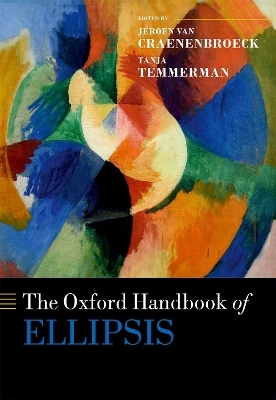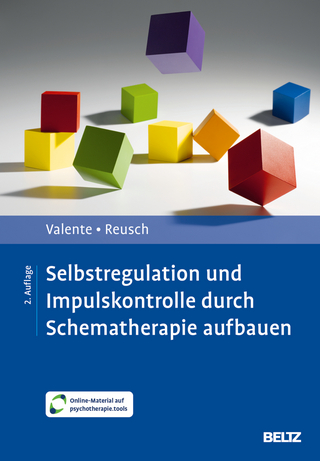
The Oxford Handbook of Ellipsis
Oxford University Press (Verlag)
978-0-19-871239-8 (ISBN)
This handbook is the first volume to provide a comprehensive, in-depth, and balanced discussion of ellipsis phenomena, whereby the meaning of an utterance is richer than would be expected based solely on its linguistic form. Natural language abounds in these apparently incomplete expressions, such as I laughed but Ed didn't, in which the final portion of the sentence, the verb 'laugh', remains unpronounced but is still understood. The range of phenomena involved raise general and fundamental questions about the workings of grammar, but also constitute a treasure trove of fine-grained points of inter- and intralinguistic variation.
The volume is divided into four parts. In the first, authors examine the role that ellipsis plays and how it is analysed in different theoretical frameworks and linguistic subdisciplines, such as HPSG, construction grammar, inquisitive semantics, and computational linguistics. Chapters in the second part highlight the usefulness of ellipsis as a diagnostic tool for other linguistic phenomena including movement and islands and codeswitching, while part III focuses instead on the types of elliptical constructions found in natural language, such as sluicing, gapping, and null complement anaphora. Finally, the last part of the book contains case studies that investigate elliptical phenomena in a wide variety of languages, including Dutch, Japanese, Persian, and Finnish Sign Language.
Jeroen van Craenenbroeck is Associate Professor of Dutch Linguistics at KU Leuven, where he is also vice-president of the Center for Research in Syntax, Semantics, and Phonology (CRISSP). He is the author of The Syntax of Ellipsis (OUP, 2010) and general editor of the journal Linguistic Variation. His research interests include ellipsis (sluicing, swiping, spading, VP-ellipsis), expletives, verb clusters, and the left periphery of the clause. Tanja Temmerman is Assistant Professor of Dutch Linguistics at Université Saint-Louis - Bruxelles (Belgium). She also teaches English and Scientific Research Methodology. She obtained her Ph.D. from Leiden University in 2012 with a dissertation entitled 'Multidominance, ellipsis, and quantifier scope'. Her research focuses principally on (generative) syntax, issues at the syntax-phonology and syntax-semantics interfaces, Dutch dialectology, and comparative Germanic syntax. Specific topics of interest include ellipsis, the internal and external syntax of idioms, phase theory, long distance dependencies, island effects, phrase structure, modals, and negation.
1: Jeroen van Craenenbroeck and Tanja Temmerman: Ellipsis in natural language: Theoretical and empirical perspectives
Part I: The Theory of Ellipsis
2: ason Merchant: Ellipsis: A survey of analytical approaches
3: Howard Lasnik and Kenshi Funakoshi: Ellipsis in Transformational Grammar
4: Jonathan Ginzburg and Philip Miller: Ellipsis in Head-Driven Phrase Structure Grammar
5: Pauline Jacobson: Ellipsis in Categorial Grammar
6: Timothy Osborne: Ellipsis in Dependency Grammar
7: Peter W. Culicover and Ray Jackendoff: Ellipsis in Simpler Syntax
8: Adele E. Goldberg and Florent Perek: Ellipsis in Construction Grammar
9: Ruth Kempson, Eleni Gregoromichelaki, Arash Eshghi, and Julian Hough: Ellipsis in Dynamic Syntax
10: Scott AnderBois: Ellipsis in Inquisitive Semantics
11: Lyn Frazier: Ellipsis and psycholinguistics
12: Tom Roeper: Ellipsis and acquisition
13: Andrew Kehler: Ellipsis and discourse
14: Daniel Hardt: Ellipsis and computational linguistics
15: Susan Winkler: Ellipsis and prosody
Part II: Ellipsis as a Diagnostic Tool
16: Klaus Abels: Movement and islands
17: Yosef Grodzinsky, Isabelle Deschamps, and Lewis P. Shapiro: Aphasia and acquisition
18: Masaya Yoshida: Parsing strategies
19: Kay González-Vilbazo and Sergio E. Ramos: Codeswitching
Part III: Elliptical Constructions
20: Luis Vicente: Sluicing and its subtypes
21: Lobke Aelbrecht and William Harwood: Predicate ellipsis
22: Andrés Saab: Nominal ellipsis
23: Kyle Johnson: Gapping and stripping
24: Alison Hall: Fragments
25: Winfried Lechner: Comparative deletion
26: Marcela Depiante: Null Complement Anaphora
27: Chris Wilder: Conjunction reduction and Right Node Raising
Part IV: Case Studies
28: Norbert Corver and Marjo van Koppen: Dutch
29: Tommi Jantunen: Finnish Sign Language
30: Anne Dagnac: French
31: Anikó Lipták: Hungarian
32: Catherine Fortin: Indonesian
33: Teruhiko Fukaya: Japanese
34: Cédric Patin and Sophie Manus: Kiswahili and Shingazidja
35: Maziar Toosarvandani: Persian
36: Joanna Nykiel: Polish
37: John Frederick Bailyn and Tatiana Bondarenko: Russian
38: Gary Thoms: Varieties of English
| Erscheinungsdatum | 03.01.2019 |
|---|---|
| Reihe/Serie | Oxford Handbooks |
| Verlagsort | Oxford |
| Sprache | englisch |
| Maße | 171 x 246 mm |
| Gewicht | 1884 g |
| Themenwelt | Geisteswissenschaften ► Psychologie ► Verhaltenstherapie |
| Geisteswissenschaften ► Sprach- / Literaturwissenschaft ► Sprachwissenschaft | |
| ISBN-10 | 0-19-871239-1 / 0198712391 |
| ISBN-13 | 978-0-19-871239-8 / 9780198712398 |
| Zustand | Neuware |
| Informationen gemäß Produktsicherheitsverordnung (GPSR) | |
| Haben Sie eine Frage zum Produkt? |
aus dem Bereich


